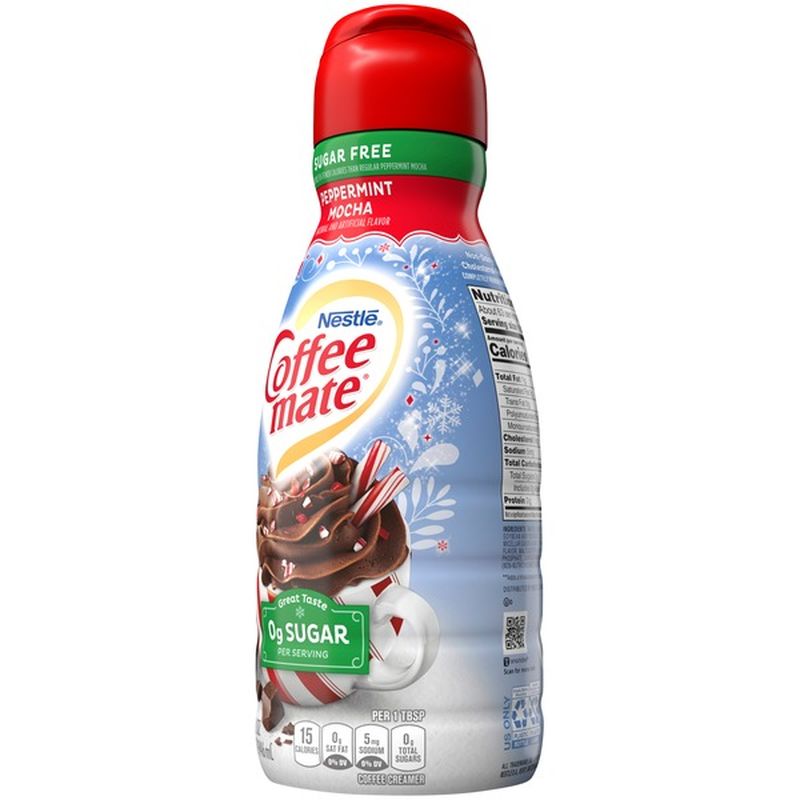

Emulsifiers, Thickener, Buffering Agents, Artificial Flavors But they’re not dairy-free, so they could be an issue for those who are allergic to milk proteins. Products with those ingredients are legally considered non-dairy, not dairy-free.Ĭreamers containing casein are technically lactose-free so they shouldn’t be a problem for the lactose-intolerant. Sodium caseinate and micellar casein are forms of milk protein, which are what’s left after lactose (milk sugar) is removed. Yes, there may still be milk-derived ingredients in non-dairy creamer. To be blunt, there’s lots of other stuff that you might not want to be putting into your coffee. We’ll discuss that in more detail shortly. You have to shop carefully to be sure you’re not buying a creamer loaded with sugar, though – and a label that says “low-calorie” or “zero sugar” doesn’t necessarily mean that what’s inside the container is good for you. They now sell coffee creamers that may be labeled zero-carb, low-carb, sugar-free, low-sugar, zero-sugar, or low-calorie. The growing demand for healthier alternatives has led most major creamer manufacturers to develop new product lines. (Coffee-Mate often uses corn syrup, but that’s simply glucose sourced from corn instead of sugar cane.) Since the majority of those flavors are sweet ones, it’s obvious what that means: they contain either sugar or a sugar substitute.įor the country’s most popular brands, Nestle Coffee-Mate and International Delight, it’s usually added sugar. Most of today’s coffee creamers are much sweeter than the milk and cream they’ve “replaced” because their primary selling point is flavor. The sugar in coffee creamer also helps with consistency and “mouthfeel,” but that’s not the major reason it’s so commonly found in creamer. And even though the high-oleic oil in liquid coffee creamer is better for you, that doesn’t mean it’s an ingredient you’d want to regularly drink. In the last few years, trans fats have been banned for use in many products and replaced by somewhat healthier “high-oleic oils.” You may still see trans fats in some powdered creamers, though.

It was particularly bad until recently because the oils commonly used to make creamers were hydrogenated or partially-hydrogenated oils, better known (and reviled) as trans fats. If that sounds like an unhealthy substitution, it is.


Oil also lengthens the shelf life of non-dairy creamers. The plant-derived oils used to make most creamers have chemical compositions similar to dairy products, so they provide the same “mouth feel” and body that coffee drinkers are accustomed to in their morning cup of coffee. There’s a lot of fat in cream and a good amount in milk. (Incidentally, Starbucks uses vegetable oil in its creamers, too.) Why Is There Oil in Coffee Creamer? Most of the other big companies do it by using bountiful amounts of oil and sugar. You might consider that “cheating,” but it’s one way to do it. Starbucks’ creamers, believe it or not, still contain non-fat milk, buttermilk and heavy cream. Store Coffee mate creamer in a cool, dry place.There’s no secret why people use coffee creamer they want a milk or cream alternative that provides the texture and consistency they prefer.īut how do you create a liquid with the consistency of milk or cream without using milk or cream? Get ready to be surprised. Whether it's your morning cup or afternoon pick-me-up, this Coffee mate creamer makes it easy to wake up your coffee. This powdered coffee creamer makes it easy to add the right amount of flavor every time, letting you transform your coffee into warm deliciousness. This is a lactose-free, gluten-free and non dairy creamer. Smooth and indulgent, this flavored creamer creates a bright vanilla flavor. Nestle Coffee mate French Vanilla Powder Coffee Creamer is an ideal way to create a delicious cup of vanilla flavored coffee perfection.


 0 kommentar(er)
0 kommentar(er)
